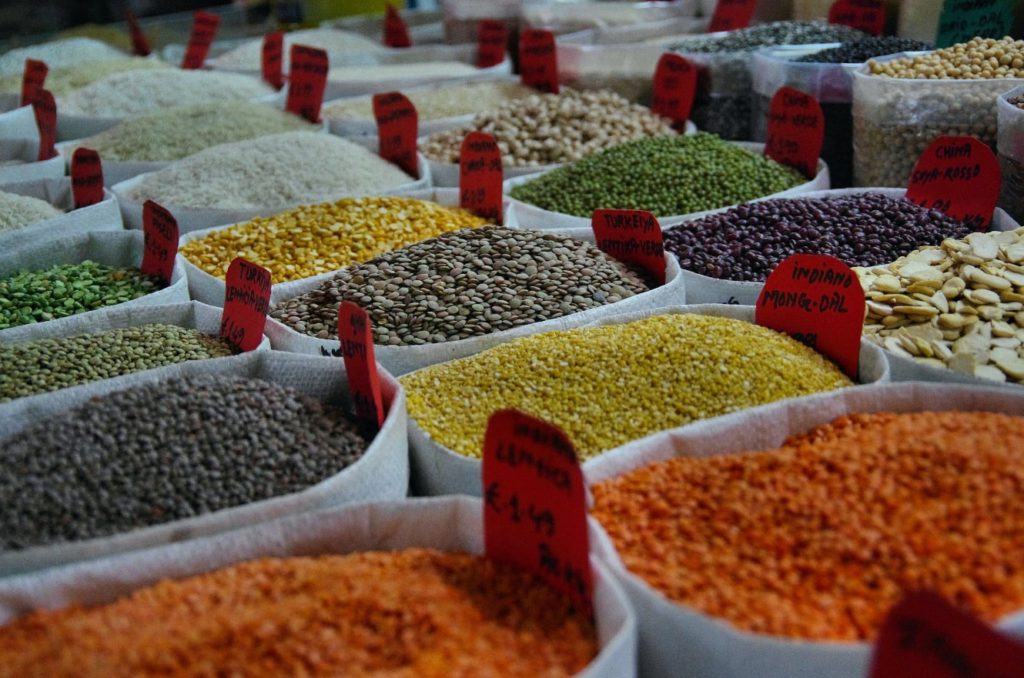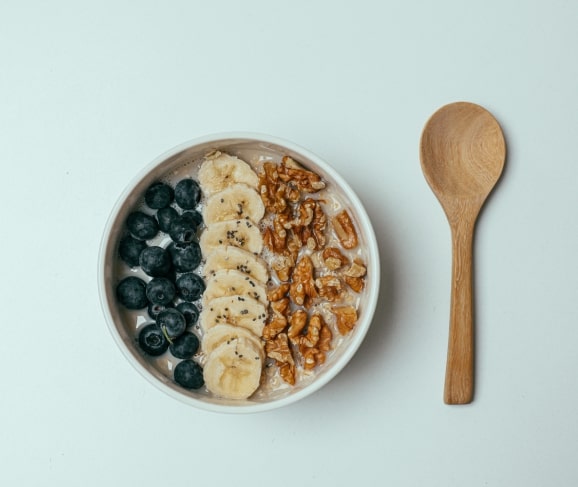Tom Brown is a locally made meal that is usually used to wean babies in Nigeria. It is a thick powder gotten from a combination of yellow corn, millet, guinea corn (cereals), groundnut (peanuts), and soybeans (legumes).

This healthy powder is highly nutritious and filling, maintaining your baby’s health even after you’ve stopped breastfeeding. It’s one of the popular Nigerian meals used to wean babies.
Although it is majorly prepared for and consumed by babies, Tom Brown also serves as food for adults. This is because it’s easy to prepare (basically under 5 minutes). This helps adults cope with their busy schedules and early breakfasts.
This article is a step-by-step guide on how to make Tom Brown.
Ingredients For Making Tom Brown Powder
- Millet – 500grams
- Guinea corn – 1kilogram
- Yellow corn -1kilogram
- Soybeans – 500grams
- Deshelled Groundnut (peanuts) – 200grams
Optional Ingredients:
- Crayfish- 1cup
- Ginger- 1 handful
- Dates (sweetener also known as dabino) – 1 handful
- Cloves (kayan kanshi) – 2 tablespoons
In Addition,
Remember to vary the quantity of ingredients if you want your tom brown to come out nicely.
Let me explain….
It’s best when the corn (yellow maize and guinea corn) is more than the other ingredients, and your millet and soybeans are half the measure of your corn. Corn has more starch compared to millet. It helps to bulk up the meal.
The groundnut (peanut) helps to add a pasty texture to the tom brown. However, it has a lot of oil, therefore the quantity of groundnut used should be less than all the other ingredients.
Step-By-Step Preparation of Tom Brown Powder

- Put your grains in separate trays and carefully remove the stones and foreign particles
- After picking out the stones from your grains, wash them separately and spread them out to dry in the sun.
- Pack them in separate bowls once they are completely dry.
- Toast your corn using a wide frying pan. Be careful not to fry too much to a point where it begins to pop like popcorn.
- Also roast your groundnut, millet and soya beans separately till they become golden brown.
- After toasting, spread your grains and allow them to cool down.
- The next step is to remove the outer shell/ seed coat (also known as chaff) of the soya beans. You can do this by grinding it softy with a mortar and pestle.
- When you are done grinding, sift the chaff away by breezing it out. Then pour it into a suitable bowl.
- Next thing is to grind your crayfish, ginger and kayan kanshi. You can either use a mortar and pestle for this or you use a blender. Put it inside a bowl after grinding.
- Now, you need to grind your dates (dabino) as well. Break them open and remove and discard the seeds inside first. Then crush the outer fruit with a blender or mortar and pestle.
- Pour all your ingredients in a bowl and mix them well.
- You can blend this mixture with a high power blender at home or you you take it to a local mill to blend. Do not add water while blending.
- After blending, pour your powder on a wide tray and allow it to cool down completely.
- Next thing is to sieve your mixture to remove any residual chaff. This leaves you with a smoother powder.
- Viola! Your tom brown is ready. Just store it inside a sizeable container and prepare it anytime you want.
How To Prepare Tom Brown Before Serving It
Tom brown is a quick and easy meal that you can prepare under 5 minutes.

These are the steps:
- Measure a quantity of tom brown powder into a bowl. Add water gradually until it becomes a pasty mixture. Be careful not to add too much water.
- Put some water on the fire and allow it to boil. Pour in your tom brown paste once your water begins to boil very well.
- Stir continuously until your tom brown attains a custard-like texture.
- There you have it! Your meal is ready. You can fortify it with milk and fruit purees to make it even more nutritious for your baby.
Health Benefits of Tom Brown
Tom brown has many health benefits for both babies and adults, some of which include:
- Lowering blood cholesterol levels.
- Supplying essential antioxidants.
- Improving vision
- Control of diabetes.
- Reducing inflammation or swelling
- Boosting energy levels.
- Control of high blood pressure.
- It is free of unhealthy preservatives
Tom brown is on our list of meals that help babies gain weight ie. this would be awesome for nursing malnourished kids to health.
What’s The Difference Between Tom Brown And Pap (Ogi)
As you may have observed above, Tom Brown is made from toasted cereals. Pap, also known as ogi or akanmu is made from fermented cereal. Learn how to make pap from scratch here.
The fermentation process in pap production gives it a distinctive flavor and light texture. In addition, it incorporates probiotics into the meal (which increases the ability to produce vitamin B and K from food, improve gut health and immunity). Finally, fermentation breaks down the nutrients in the grain to small easier to digest units. Other ingredients such as soy and groundnuts are added after the pap is cooked.
Tom brown on the other hand is from toasted/ roasted cereals. All the ingredients are added and milled together. This makes a denser, more filling, more viscous meal. The fiber content is likely to be higher, keeping hunger at bay for longer. It may not be as rapidly digested as pap.
Finally, we have just one question….
What are you waiting for? Start making your own tom brown baby food today.
Trust us, your baby will thank you for it!
References
- Essien, N. C., Umoh, I. B., Uboh, F. E., & Lawal, O. O. (2010). Evaluation of the nutritional quality of “Tom Brown” weaning diets. Global Journal of Pure and Applied Sciences, 16(1).
- Okoh, P. N. (1998). Nutritional quality of plant foods. AU Osagie, OU Eka, eds, 32-52.
- Fermentation and germination improve nutritional value of cereals and legumes through activation of endogenous enzymesSmith G. Nkhata, Emmanuel Ayua, Elijah H. Kamau, Jean‐Bosco ShingiroFood Sci Nutr. 2018 Nov; 6(8): 2446–2458. Published online 2018 Oct 16. doi: 10.1002/fsn3.846PMCID: PMC6261201
- Olowoniyan, F. O. (1994, November). Household processing and utilization of soybean in Nigeria. In Society for International Development (SID) and West African Farming Systems Research Network (WAFSRN) Joint workshop in Ibadan.

